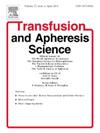Transforming care: Patient insights on neurology-led peripheral plasma exchange service
IF 1.4
4区 医学
Q4 HEMATOLOGY
引用次数: 0
Abstract
Background and objectives
Therapeutic plasma exchange (TPE) is a highly efficacious treatment for a wide range of antibody-mediated neuroimmunological disorders. Practical difficulties of TPE via membrane filtration, which requires central venous access, have limited its use for neurology patients. The development of centrifugal plasma exchange (cTPE) machines has enabled treatment via peripheral venous access. We set up a neurology-led ambulatory day case peripheral plasma exchange service at the Wessex Neuroscience Centre in 2019 via cTPE machines. This study aims to evaluate the service based on patients' experience and satisfaction.
Materials and method
We retrospectively collected data for patients who received cTPE in our centre over a 20-month period. We designed a patient survey that included 15 questions based on Likert grading system. Patients were either given a QR code or were contacted by volunteers from the hospital to complete the questionnaire over the phone.
Results
47 out of the 72 eligible patients participated in the survey. All survey questions received a positive response of 80 % and above, with responses in the range of 90 %. All patients who completed the survey commented that they would recommend this service.
Conclusion
cTPE machines enable plasma exchange via peripheral venous access allowing treatment for ambulatory day case patients. This study provides evidence confirming the positive patient experience with cTPE services at the Wessex Neurosciences Centre and highlights the importance of establishing neurology-led cTPE units to deliver effective treatment for neuroimmunology patients.
改变护理:患者对神经病学主导的外周血浆交换服务的见解
背景和目的治疗性血浆置换(TPE)是一种非常有效的治疗多种抗体介导的神经免疫疾病的方法。通过膜过滤TPE的实际困难,需要中心静脉通道,限制了其在神经病学患者中的应用。离心血浆交换(cTPE)机的发展使外周静脉治疗成为可能。2019年,我们通过cTPE机器在韦塞克斯神经科学中心建立了以神经病学为主导的日间门诊外周血浆交换服务。本研究旨在以病人的体验和满意度来评估服务。材料和方法我们回顾性收集了20个月期间在本中心接受cTPE治疗的患者的资料。我们设计了一份包括15个问题的基于李克特评分系统的患者调查。病人要么得到一个二维码,要么由医院的志愿者通过电话联系他们完成调查问卷。结果72例符合条件的患者中有47例参加了调查。所有调查问题都得到了80% %及以上的积极回应,其中90% %的回应范围。所有完成调查的患者都表示他们会推荐这项服务。结论ctpe机可以通过外周静脉进行血浆交换,为日间门诊患者提供治疗。这项研究提供了证据,证实了韦塞克斯神经科学中心cTPE服务的积极患者体验,并强调了建立神经学主导的cTPE单位为神经免疫学患者提供有效治疗的重要性。
本文章由计算机程序翻译,如有差异,请以英文原文为准。
求助全文
约1分钟内获得全文
求助全文
来源期刊
CiteScore
3.60
自引率
5.30%
发文量
181
审稿时长
42 days
期刊介绍:
Transfusion and Apheresis Science brings comprehensive and up-to-date information to physicians and health care professionals involved in the rapidly changing fields of transfusion medicine, hemostasis and apheresis. The journal presents original articles relating to scientific and clinical studies in the areas of immunohematology, transfusion practice, bleeding and thrombotic disorders and both therapeutic and donor apheresis including hematopoietic stem cells. Topics covered include the collection and processing of blood, compatibility testing and guidelines for the use of blood products, as well as screening for and transmission of blood-borne diseases. All areas of apheresis - therapeutic and collection - are also addressed. We would like to specifically encourage allied health professionals in this area to submit manuscripts that relate to improved patient and donor care, technical aspects and educational issues.
Transfusion and Apheresis Science features a "Theme" section which includes, in each issue, a group of papers designed to review a specific topic of current importance in transfusion and hemostasis for the discussion of topical issues specific to apheresis and focuses on the operators'' viewpoint. Another section is "What''s Happening" which provides informal reporting of activities in the field. In addition, brief case reports and Letters to the Editor, as well as reviews of meetings and events of general interest, and a listing of recent patents make the journal a complete source of information for practitioners of transfusion, hemostasis and apheresis science. Immediate dissemination of important information is ensured by the commitment of Transfusion and Apheresis Science to rapid publication of both symposia and submitted papers.

 求助内容:
求助内容: 应助结果提醒方式:
应助结果提醒方式:


